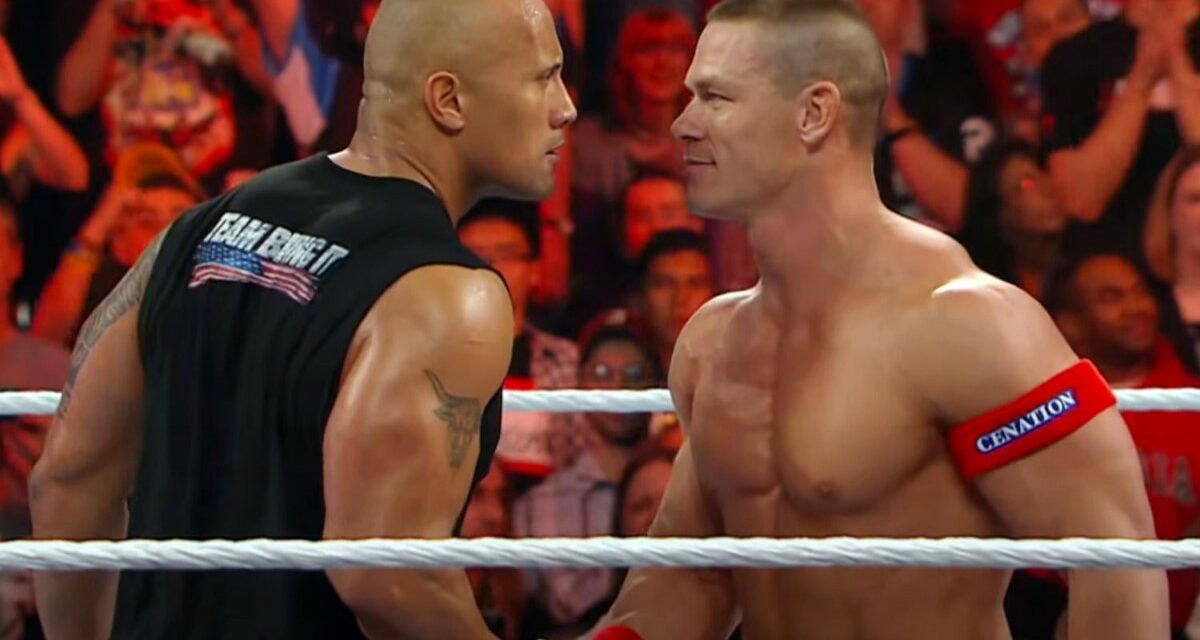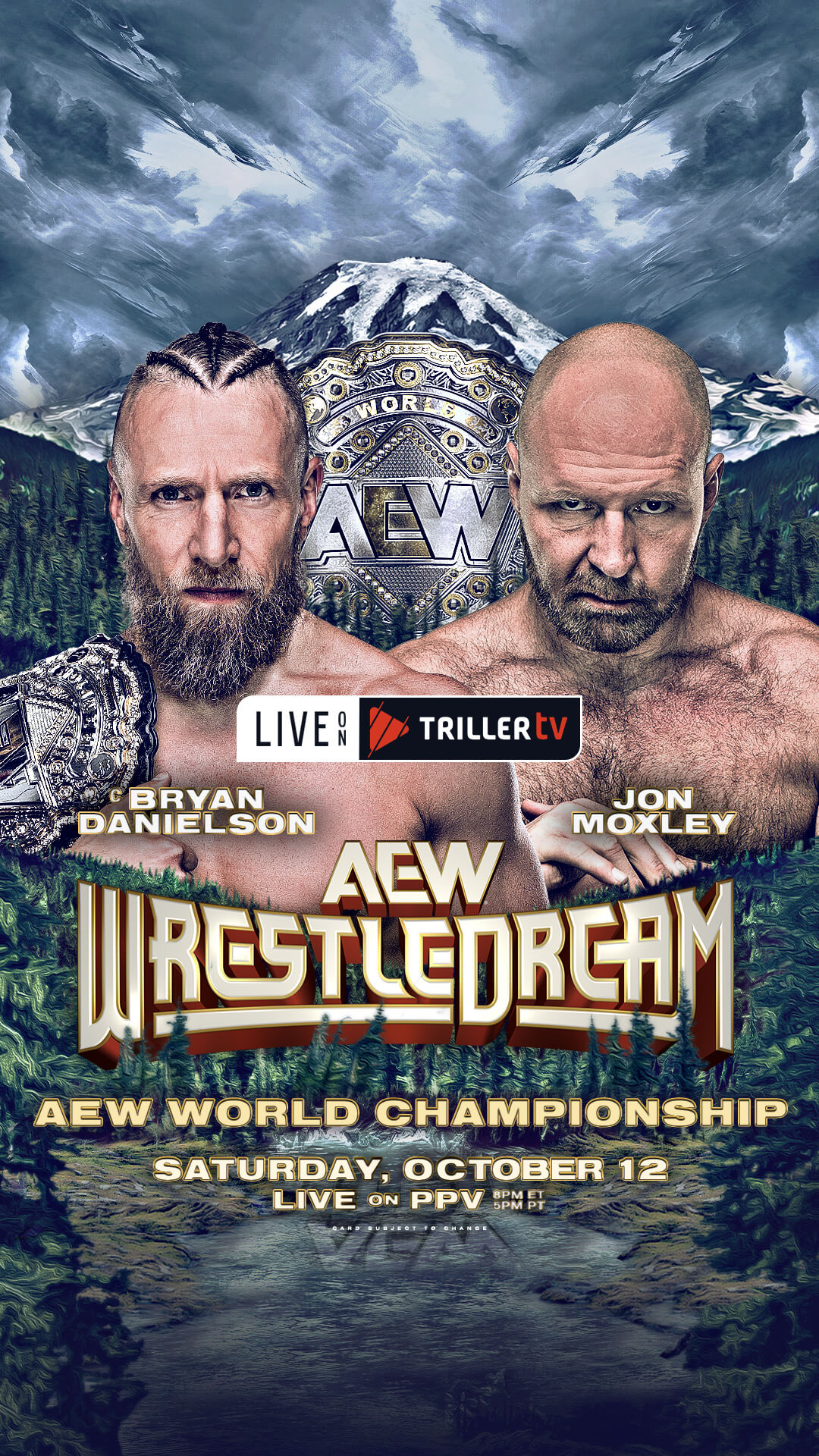There are a couple of fair questions to be asked going into this week’s episodes of Rivals on A&E, featuring John Cena VS. Dwayne “The Rock” Johnson. First: is it really a rivalry if it consists of only two matches? The answer is yes, at least when you’re talking about two superstars who are better known for their personalities than their actual in-ring work. Setting these two talkers up against one another, and giving them two years to jab at each other on the mic, both playfully and otherwise, was really the main attraction of the feud.
The second question: is there enough material from their time together to fill an hour-long TV slot? Eh, not really.
If you know the set-up of Rivals, former WWE writer (and Fred of Scooby-Doo movie fame) Freddie Prinze, Jr. leads a roundtable discussion of WWE stars, some with a personal connection to the wrestlers featured in the episode, and some acting more as fans. This week, Bayley, JBL, Kevin Nash, and Natalya offer their takes on the clash of the two WWE titans.
However, they don’t have much to say. Natalya chimes in to acknowledge the legitimate tension she felt between the two; Nash comments on the great shape Rock was in going into the first WrestleMania match with Cena; Prinze can’t decide who won the promo battle between the two; and neither JBL nor Bayley is given time to do much other than hype the match as historic.
There are others who appear in separate video clips, in this case summarizing the careers of first Johnson then Cena. Mick Foley, Hulk Hogan, and Steve Austin all acknowledge the meteoric rise of The Rock, while Jerry Lawler, former WWE writer Brian Gewirtz, and Johnny Gargano track how Cena was pegged to be the next face of the company after The Rock departed for Hollywood. This, according to Natalya, set Cena up for harsh treatment by a lot of fans who booed him because they felt he was chosen for the top spot without their approval.
Mind you, as Cena points out a couple of times in archival footage, the fans boo him and then buy his merch like crazy.
Much has been made of how Cena and Johnson’s beef with one another was legit, with Cena starting the feud by, in his words, “trying to drag (Johnson) back” to the WWE by disparaging him on a Wrestlecast podcast in December of 2008. Johnson would fire back shortly afterwards at the WWE Hall of Fame ceremony of that year, taking shots at Cena’s performance in The Marine.
Cena says later on in this show that his gambit the entire time he feuded with The Rock was not to let Johnson in on the fact that he was trolling him in character, but that in truth it wasn’t personal. Wrestling is at its best when the audience isn’t quite sure what to believe, but it stretches plausibility to think that Cena, the very public face of the WWE, decided on his own to engage in a year-long pester-fest of one of the company’s biggest stars, right up to planning a WrestleMania main event, and kept a kayfabe grudge going that whole time.
Between the time when the first match watch was announced for WrestleMania XXVIII one year ahead and the ringing of the bell, Gewirtz talks about the creative ways that the writing team had to juggle schedules, particularly Johnson’s hectic life, to keep the feud alive. The timing was right for the feud to go online, and Twitter became a way to engage in what you might now call socially-distant promo battles.
Highlights of their actual in-ring promo battles feature the greatest hits: The Rock comparing Cena’s t-shirt collection to a bowl of Fruity Pebbles (which landed Cena a sponsorship with the cereal, so … burn?); Cena raps, Johnson strums a guitar; and the time that someone tipped Cena off to The Rock cribbing notes on his wrist, which John was happy to point out to the fans.
After their match at WrestleMania XXVIII, the two combatants embrace, praise each other, and seem to bury the hatchet with a better understanding of one another. They meet up now and then before facing off once more at the following year’s WrestleMania 29, with Cena prevailing and Rock passing the torch to him as Hogan had once done for Johnson himself.
It’s all presented in a tidy little package, stretched a little thinly to meet the time requirements. Actually, it’s not that different from the rivalry itself, which was definitely stretched out to span over two years of storytelling. The episode, and the feud, were both fine — but both also felt like they could have offered more.
RELATED LINKS
- March 29, 2012: Rock VS. Cena: Predictions from the stars
- Sep. 24, 2012: Rock VS. Cena DVD heavy on hype, short on magic
- Slam Wrestling’s John Cena story archive
- Slam Wrestling’s Dwayne “The Rock” Johnson and family story archive


